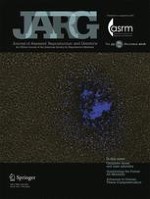Published in:

01-12-2016 | Assisted Reproduction Technologies
Developmental ability of embryos produced from oocytes with fragile oolemma by intracytoplasmic sperm injection
Authors:
Yamato Mizobe, Naoto Oya, Reiko Iwakiri, Naomi Yoshida, Yumi Sato, Nanase Onoue, Kazuchika Miyoshi, Makoto Tokunaga, Yuji Ezono
Published in:
Journal of Assisted Reproduction and Genetics
|
Issue 12/2016
Login to get access
Abstract
Purpose
In intracytoplasmic sperm injection (ICSI) of oocytes with a fragile oolemma (fragile oocytes), breakage can occur at injection. In this study, we produced embryos from oocytes with a fragile and normal oolemma (normal oocytes) by ICSI and compared their ability to be fertilized and develop in vitro. We also investigated whether fragile oocyte-derived embryos could implant after blastocyst transfer to determine whether fragile oocytes should be used for assisted reproductive technology treatment.
Methods
Oocytes were divided into three groups—normal oocytes from cycles containing no fragile oocytes (group A), normal oocytes from cycles containing at least one fragile oocyte (group B), and fragile oocytes (group C), and their fertilization abilities after ICSI and the developmental abilities of resultant embryos were compared.
Results
The fertilization rate in group C (65.3 %) was significantly (P < 0.01) lower than those in groups A (84.6 %) and B (86.9 %), and the degeneration rate in group C (24.2 %) was significantly (P < 0.01) higher than those in groups A (0.71 %) and B (0.28 %). However, there were no significant differences in the blastocyst formation rates (59.7–67.5 %) of embryos among the different groups. In addition, the pregnancy rate after transfer of blastocysts in group C (50.0 %) was not significantly different from those in groups A (35.6 %) and B (45.8 %).
Conclusions
The fertilization ability after ICSI of fragile oocytes is lower than that of normal oocytes but the resultant embryos have the same developmental ability as those of normal oocyte-derived embryos.





